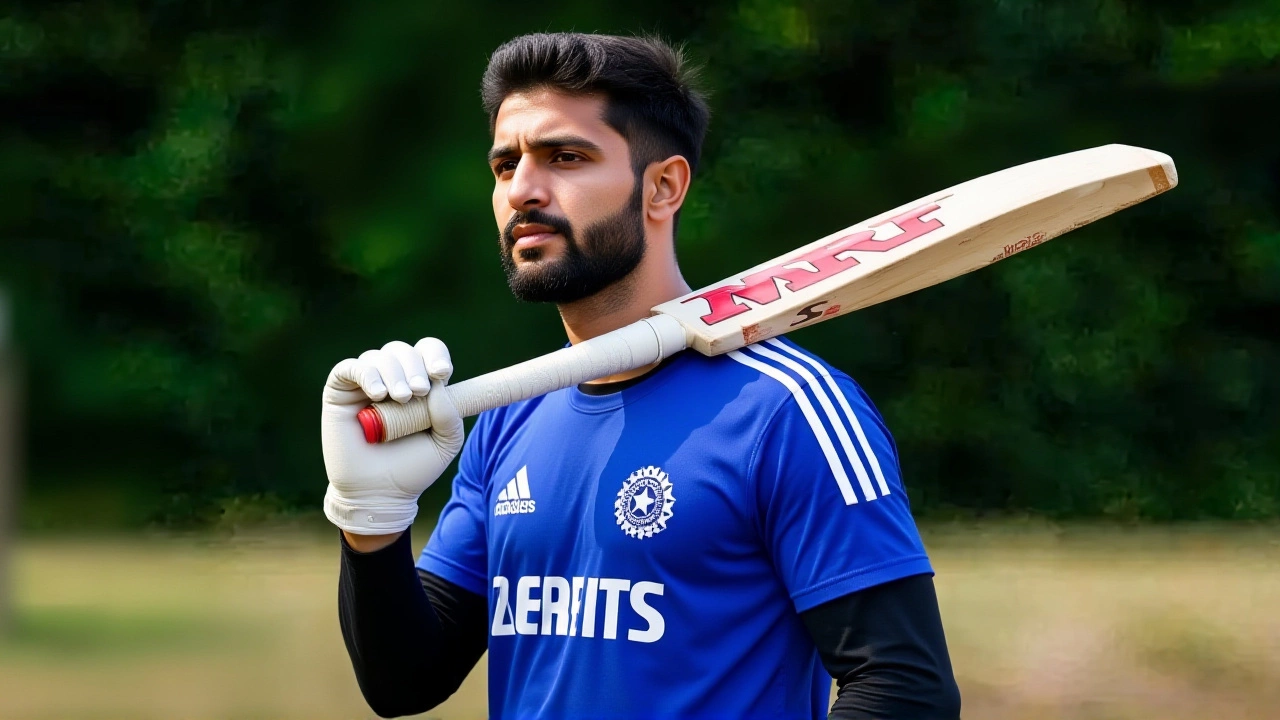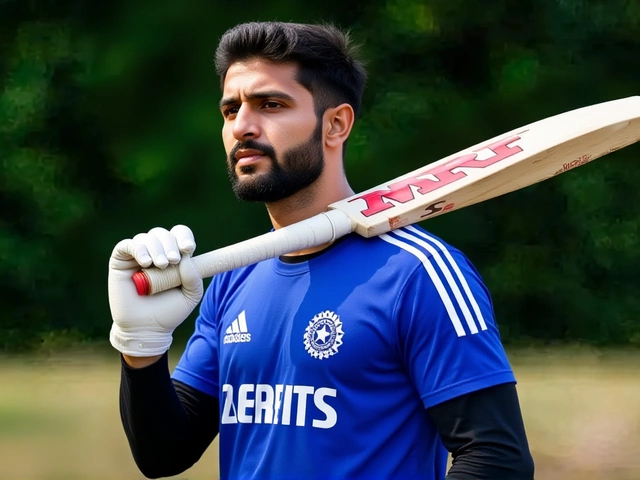KL Rahul returns as India's ODI captain as Shubman Gill's neck injury casts doubt on T20I availability

- Everett Marsden
- 23 November 2025
- 0 Comments
When KL Rahul stepped onto the field in Ranchi on November 30, 2025, he wasn’t just taking the captain’s armband — he was stepping back into a role he hadn’t held in two years, under circumstances no one expected. The Board of Control for Cricket in India (BCCI) confirmed Rahul as captain for the three-match ODI series against South Africa, replacing regular skipper Shubman Gill, who was ruled out due to a serious neck injury sustained during the first Test in Kolkata. The news sent ripples through Indian cricket — not just because of the leadership change, but because Gill’s injury might sideline him for the entire T20I series too.
How the Injury Unfolded
Gill was batting on Day 2 of the first Test at Eden Gardens on November 21, 2025, when he winced after a short ball struck his neck. He continued to bat, but by the end of the day, he was visibly stiff. He was taken to a hospital in Kolkata, discharged the next day, and even traveled to Guwahati for the second Test — only to be declared unfit. What began as a suspected neck spasm turned into something more complex. According to a BCCI source quoted by The Times of India, ‘All tests are being conducted to determine whether it’s a muscular strain or a nerve-related issue.’
Gill consulted Dr. Abhay Nene, a leading spinal specialist in Mumbai, whose findings were sent to Ajit Agarkar, the BCCI’s chief selector. The injection Gill received to manage pain wasn’t a cure — it was a stopgap. Rehabilitation, not rest, is now the next phase. But even that may have to wait.
Why KL Rahul? The Captaincy Decision
The BCCI didn’t rush this. With Shreyas Iyer still recovering from a rib cage injury picked up during India’s October 2025 tour of Australia, and Rishabh Pant — who captained the second Test in Guwahati — lacking recent ODI experience, Rahul emerged as the safest bet. Pant had played just one ODI in the past 12 months, after his near-fatal car crash in December 2022. His return to the 50-over format was welcome, but not enough to justify captaincy.
Rahul’s last captaincy stint? The December 2023 tour of South Africa. Since then, he’s been a consistent top-order batter, a calm presence in the dressing room, and someone who’s led India A and the IPL’s Lucknow Super Giants. The selection committee, led by Agarkar, weighed leadership, form, and familiarity with the current squad. Rahul had all three. His appointment wasn’t just about experience — it was about stability.
The Ripple Effect: Who’s In, Who’s Out
The squad announcement on November 24, 2025, had more surprises than just the captaincy. Jasprit Bumrah was rested — a strategic move ahead of the T20I series and the 2026 Champions Trophy. The BCCI is clearly managing workloads with an eye on the bigger calendar. Meanwhile, Pant’s inclusion as the second wicketkeeper was a nod to his recovery, but also a signal: they’re preparing for the possibility that Gill might miss more than just these ODIs.
With Gill’s status uncertain, speculation is growing that he could miss the five-match T20I series starting December 9, 2025, in Visakhapatnam, Raipur, and other cities. That would be a major blow. Gill had been India’s most consistent ODI batter since 2023, averaging 58.3 in his last 15 innings. His absence would force the team to reshuffle its top order — possibly promoting Suryakumar Yadav or even Rohit Sharma back into the lineup.
What This Means for India’s Future
This isn’t just about one series. It’s about leadership continuity. India has cycled through five ODI captains since 2021. Rahul’s return offers a rare moment of clarity. He’s not flashy, but he’s reliable. He understands pressure. He’s captained in high-stakes games abroad. If Gill is out for weeks, Rahul could become the de facto leader until the next major tournament.
Meanwhile, the medical team’s caution is telling. Neck injuries in cricket aren’t new — but nerve involvement is rare and dangerous. Players like David Warner and Steve Smith have faced similar issues. Recovery isn’t just physical — it’s neurological. If Gill’s symptoms persist, he may need extended rehab, possibly pushing his return into early 2026. That would mean missing the Asia Cup and the home series against Australia.
What’s Next?
The first ODI in Ranchi will be a test of Rahul’s leadership under pressure. South Africa, fresh off a strong Test series, will be hungry. India’s batting depth looks solid, but without Gill, the middle order feels exposed. The BCCI will monitor Gill’s progress daily. If he’s cleared by December 5, he might be available for the final ODI — but that’s a long shot.
One thing’s clear: Indian cricket is at a crossroads. Leadership is unstable. Injuries are piling up. And the next 30 days will define how the team handles adversity — not just on the field, but off it too.
Frequently Asked Questions
Why wasn’t Rishabh Pant named ODI captain despite captaining the second Test?
Pant had played only one ODI in the past year, following his recovery from a 2022 car accident. The BCCI’s selection committee prioritized recent 50-over experience and leadership consistency, which Rahul had demonstrated in domestic and IPL captaincy roles. Pant’s inclusion as second wicketkeeper was a tactical move, not a leadership one.
How serious is Shubman Gill’s neck injury?
Initial reports suggested a neck spasm, but further tests with spinal specialist Dr. Abhay Nene indicate possible muscular strain or nerve involvement. This is more complex than a simple muscle pull and requires a longer rehabilitation timeline. BCCI officials say a return for the T20I series is unlikely unless there’s rapid improvement.
Who else is injured and unavailable for the ODI series?
Shreyas Iyer is out with a rib cage injury sustained during India’s October 2025 tour of Australia. Jasprit Bumrah is being rested for workload management, not injury. With Gill and Iyer both sidelined, India’s middle-order depth is under strain, forcing the selectors to rely on younger players like Suryakumar Yadav and Arshdeep Singh.
When will we know if Shubman Gill can play in the T20I series?
The BCCI will reassess Gill’s condition after the third ODI on December 6, 2025. A final decision on his T20I availability is expected by December 7. If he hasn’t shown significant improvement in mobility and pain levels by then, he’ll likely be ruled out. His absence would mark the first time since 2022 that India begins a major series without their regular ODI captain.
Is KL Rahul likely to keep the captaincy beyond this series?
If Rahul leads India to a strong result against South Africa, he’ll likely remain captain through the Asia Cup in 2026. The BCCI has signaled a preference for stability, and with Gill’s injury timeline uncertain, Rahul’s calm demeanor and batting consistency make him the ideal interim leader. His performance in these ODIs will heavily influence the long-term captaincy decision.
What does this mean for India’s 2026 Champions Trophy chances?
India’s chances hinge on depth. Gill’s absence weakens the top order, but Rahul’s return stabilizes leadership. Bumrah’s rest is strategic, not alarming. The real concern is whether India can develop a reliable No. 4 batter in Gill’s absence. If young players like Yashasvi Jaiswal or Devdutt Padikkal step up, India remains a contender. But consistency under pressure is still unproven.


